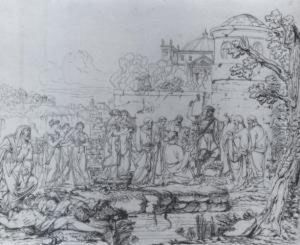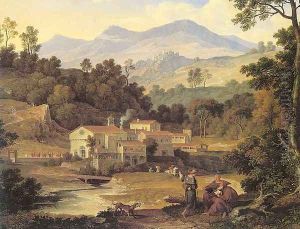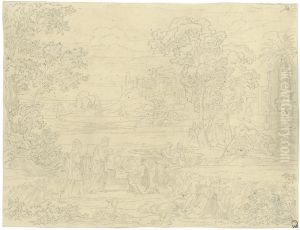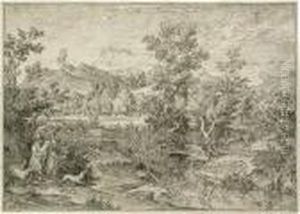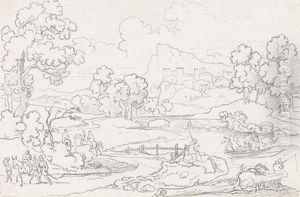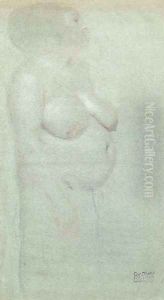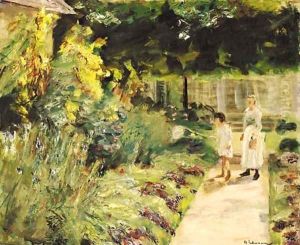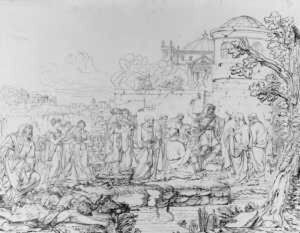





Die Zeremonie Des Nageleinschlags Am Minervatempel Anlasslich Der Pestepidemie In Rom 363 V. Chr. (nach Livius Vii, 3, 3ff.).
-
About Reproduction
Discover the allure of art with our faithful reproduction of "Die Zeremonie Des Nageleinschlags Am Minervatempel Anlasslich Der Pestepidemie In Rom 363 V. Chr. (nach Livius Vii, 3, 3ff.).", originally brought to life by the talented Joseph Anton Koch. Unlike posters or prints, our hand-painted oil painting breathes an unique sense of depth and texture into your space. Every detail, every stroke, and every texture is meticulously recreated, paying the perfect homage to Joseph Anton Koch and his artistic vision.
Owning this piece is more than just decoration - it's a statement of your refined taste in art. Let the vibrant colors and intricate details of this replica serve as a daily reminder of the beauty in our world. Elevate your decor and appreciate the richness of art with our replica of this masterpiece.
-
Painting Description
Joseph Anton Koch's painting, "Die Zeremonie Des Nageleinschlags Am Minervatempel Anlasslich Der Pestepidemie In Rom 363 V. Chr. (nach Livius Vii, 3, 3ff.)" (translated as "The Ceremony of the Nail-Driving at the Temple of Minerva on the Occasion of the Plague Epidemic in Rome 363 B.C. (after Livy VII, 3, 3ff.)"), is a significant work that delves into the historical and mythological past of ancient Rome. Created by the renowned Austrian painter Joseph Anton Koch, this painting is an exemplary representation of his neoclassical style, which often drew upon historical and literary sources for inspiration.
The painting depicts a ceremonial event described by the Roman historian Livy, where a nail was driven into the wall of the Temple of Minerva as a ritualistic act intended to ward off a devastating plague that struck Rome in 363 B.C. This ritual, known as the clavus annalis, was believed to have apotropaic properties, symbolizing the containment of the pestilence and the restoration of order and health to the city.
Koch's meticulous attention to detail and his ability to convey the gravity of the historical moment are evident in the composition. The figures are rendered with classical precision, and the architectural elements of the Temple of Minerva are depicted with an adherence to historical accuracy that reflects Koch's deep engagement with the classical past. The painting captures the solemnity and desperation of the Roman citizens as they participate in this ancient rite, highlighting the intersection of religion, politics, and public health in ancient Rome.
Joseph Anton Koch (1768-1839) was a pivotal figure in the German Romantic movement, though his work often exhibited a strong neoclassical influence. His fascination with antiquity and his ability to blend historical narrative with artistic expression are well exemplified in this painting. "Die Zeremonie Des Nageleinschlags Am Minervatempel Anlasslich Der Pestepidemie In Rom 363 V. Chr." stands as a testament to Koch's skill in bringing historical events to life through his art, offering viewers a window into the rituals and beliefs of ancient civilizations.
-
Lead Time & Shipping
When you order this oil painting replica, it typically takes 2-3 weeks to paint. If the artwork is more complex, it might need a little more time to ensure the best quality. Once it's ready, we'll send you a photo for your approval. After you give the green light, we'll ship it to you for free.
-
Return & Refund
We believe in the quality of our hand-painted oil painting reproductions, and your satisfaction is our priority. If for any reason, you are not completely satisfied with your purchase, we offer a 45-day return policy. You can return your artwork within 45 days of receipt and receive a full refund. Please note that the artwork must be returned in the original packaging and in the same condition as it was received.





